Exploring the Hover Glide Foil: Insights and Applications
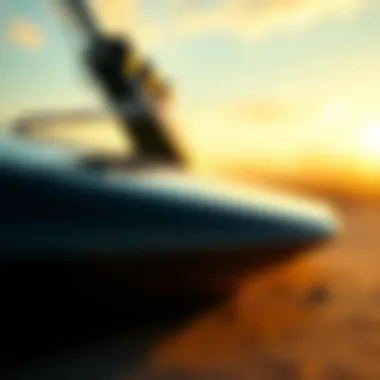
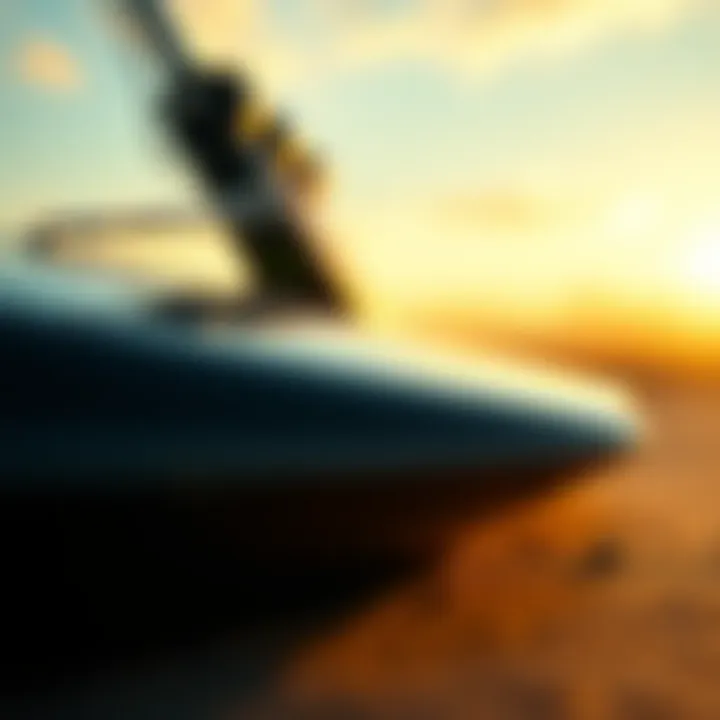
Intro
The world of kiteboarding is ever-evolving, and one of the standout innovations of late is the hover glide foil. This equipment is like the cherry on the top for many kiteboarders, bridging the gap between aerial mastery and seamless water gliding. The hover glide foil enhances the experience of riding the waves, offering riders a unique sense of freedom and fluidity.
As the sport of kiteboarding grows, so does the need for a deeper understanding of its equipment. Whether you are a newbie dipping your toes in the waves or a seasoned pro looking to refine your skills, comprehending the hover glide foil’s design, functionality, and user experiences is crucial. From its engineering details to maintenance tips, this article endeavors to bring readers thorough insights into everything related to the hover glide foil.
This narrative serves as a guide, particularly useful for kiteboarders, outdoor enthusiasts, and travel bloggers seeking to up their game. Let’s unpack the intricate world of the hover glide foil, unraveling its many layers as we journey through this captivating piece of equipment.
Gear and Equipment
Essential Kiteboarding Gear for Beginners
Starting with the essential gear can make all the difference for new kiteboarders. The right equipment not only emboldens riders but also enhances safety, ensuring that every session on the water is enjoyable. Key pieces of gear include:
- Kite: Selecting the appropriate kite for wind conditions is crucial, as it dictates the overall usability and performance.
- Board: A well-chosen board complements the kite and suits the rider's skill level.
- Harness: Comfort and control boil down to finding a harness that fits well and provides adequate support.
- Safety Gear: Helmets and impact vests might not be the most glamorous, but they are lifesavers.
- Foil: This is where the hover glide foil comes into play. Familiarizing oneself with how it works can set a rider apart.
Advanced Equipment for Experienced Riders
For those ready to take a leap into more nuanced kiteboarding experiences, advanced equipment can significantly enhance performance. Some notable mentions include:
- Performance Kites: These kites are designed for speed and agility, perfect for experienced riders looking to push boundaries.
- High-End Foils: Upgrading to advanced foil designs can lead to improved lift and maneuverability, maximizing time spent above the water.
- Custom Boards: Personalization in shape, size, and materials can cater to specific riding styles and conditions, giving the rider an edge.
Techniques and Tips
Basic Riding Techniques for Newbies
Starting with the basics can lay a solid foundation. Understanding how to balance your weight and control the kite plays an integral role in learning to ride effectively. Here are some foundational techniques:
- Kite Control: Practicing kite flying on land can help new riders understand how to manage its pull while on the water.
- Body Positioning: Keeping a low center of gravity while bending the knees ensures stability and control while riding.
- Edge Control: Learning to apply pressure to the edges of the board helps in turning and maneuvering with precision.
Expert Tricks to Elevate Your Skills
As riders become more adept, the desire to perform tricks inevitably arises. Here are some tricks worth practicing:
- Jumping: Timing the take-off and managing the kite's power can lead to a smooth transition into the air.
- Foiling: Mastering the foil can open new avenues for speed and agility, allowing riders to glide for longer distances with less effort.
- Transitions: Smoothly changing direction while maintaining momentum is vital for increasing skill levels.
Kiteboarding is not just about the thrill; it's about mastering the elements and knowing your gear intimately.
Prologue to Hover Glide Foils
The world of kiteboarding has gained significant momentum over the years. One of the most pivotal advancements in this thrilling sport is the development of hover glide foils. These foils are not just a passing trend; they represent a fundamental shift in the way riders interact with the water. Understanding hover glide foils is not merely about grasping their mechanics; it's about grasping why they are embraced by both amateurs and veterans alike.
To truly appreciate their value, one must delve into the essence of what a hover glide foil is and how it came to be. The benefits are manifold—efficiency, stability, and a unique sensation of flying above the waves. These elements converge to transform a traditional kiteboarding experience into something otherworldly. Whether you're a seasoned kiteboarder hoping to refine your skills or a newcomer eager to dive into the sport, the knowledge of hover glide foils is paramount.
Additionally, there's a broader conversation to be had about their historical context. Understanding where foiling originated informs us of its evolution and how it meets the modern demands of water sports enthusiasts. It allows kiteboarders to appreciate the engineering masterminds behind these devices, blending form with function. Thus, before one paddles out to sea, having a firm grasp on the specifications of hover glide foils paves the way for a smoother experience.
Defining the Hover Glide Foil
The hover glide foil is an innovative piece of equipment designed to lift the rider above the water's surface. Unlike traditional boards, which maintain constant contact with the water, a foil uses a slender underwater wing that generates lift as the kiteboarder gains speed. When moving at particular velocities, the foil catches the water beneath, enabling the rider to glide seamlessly and enjoy smoother rides with less drag.
Built typically from lightweight materials like carbon fiber or aluminum, hover glide foils are meticulously engineered to balance strength and weight. This construction supports a rider's weight while ensuring agility and responsiveness. Consequently, the rider experiences better control and less fatigue over extended sessions, enhancing overall performance.
Historical Context of Foiling
Foiling didn’t just spring up overnight. Its roots can be traced back to over a century ago when inventors first experimented with hydrofoils in sailing and aircraft. Fast forward to the late 20th century, it found its way into surfing and later kiteboarding. The early designs were rudimentary and often cumbersome, making them hard to master.
In the early 2000s, a significant leap occurred. Innovators began refining the design, focusing on hydrodynamic efficiency and user-friendly setups. This led to the introduction of the hover glide foils that kiteboarders recognize today. Riders noticed they could surf swells and maintain speed even in lighter winds, changing the face of the sport. With this surge in popularity, manufacturers have continued to push technological boundaries, ensuring the development of more specialized foils tailored for various riding styles.
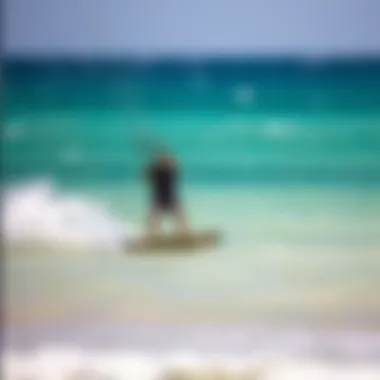
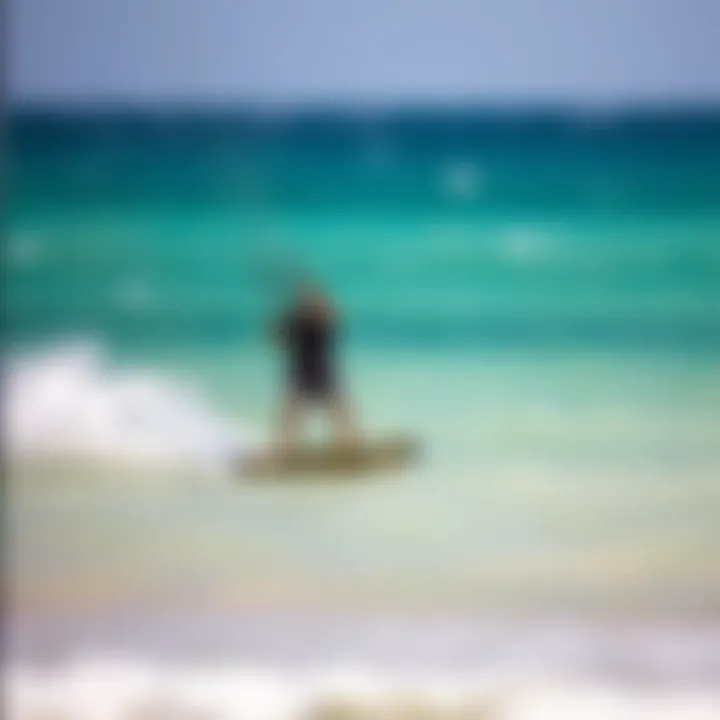
In understanding these historical threads, one can see how the hover glide foil has evolved, answering the needs of the enthusiastic kiteboarding community while promising future innovations that cater to even more diverse riding experiences.
Engineering and Design
Understanding the engineering and design of the hover glide foil is imperative for anyone invested in kiteboarding and water sports. This high-tech equipment is not just a simple board and foil; it merges science and creativity to ensure peak performance on the water. The design influences how well a kiteboarder can harness the power of the wind and glide smoothly above the surface, amplifying their overall experience.
Material Composition
The selection of materials is crucial in the crafting of hover glide foils. Engineers utilize advanced composites, primarily carbon fiber and some high-grade aluminum alloys, which contribute to the overall strength and weight of the foil. Carbon fiber offers a favorable strength-to-weight ratio, allowing for a lighter and stiffer structure. This enhances performance, as lighter foils require less effort to ride, letting the rider focus on technique and steering, instead of merely battling resistance.
Moreover, using marine-grade aluminum for components ensures durability against harsh saltwater environments. Such materials withstand the rigors of frequent use, making them reliable for both casual riders and competitive athletes alike. Attention to these materials not only influences performance but also long-term maintenance and repair, fluctuating costs down the line.
Hydrodynamics in Action
Hydrodynamics plays a vital role in how a hover glide foil cuts through the water. The design of the wings is paramount; they are engineered to create lift efficiently. The foil’s shape, often characterized by an elongated design, reduces drag while optimizing lift. By cutting through the water's surface, the foil generates an upward force that elevates the rider, providing that exhilarating experience of "flying" over the surface.
Typically, the angle at which the foil meets the water, also known as the angle of attack, significantly affects performance. A well-designed foil will maintain stability even at varying speeds and conditions, addressing one of the common challenges faced by new kiteboarders and seasoned professionals alike. Overall, understanding the hydrodynamics gives riders insight into how to adjust their techniques based on wind and water conditions, allowing them to leverage their equipment effectively.
Aerodynamics and Performance
While hydrodynamics deals with water, aerodynamics focuses on how the foil interacts with air. The design elements that influence aerodynamics include the shape of the wings and the structure of the mast. A streamlined mast reduces wind resistance and enhances overall performance, similar to how an aerodynamic car can achieve better fuel efficiency.
When in action, the hover glide foil should work smoothly between the forces of air and water. The lift generated by the foil and the kite’s pull must be in harmony, creating a seamless ride. This balance directly relates to performance, as effective aerodynamics can mean the difference between a smooth glide and an unstable ride where the rider struggles against the elements.
Key Performance Indicators (KPIs) for kiteboarders to watch include:
- Lift efficiency: How well the foil creates upward motion.
- Drag reduction: The ability of the foil to minimize resistance both in the water and air.
- Stability: How steady the foil remains under different riding conditions.
"Understanding the intricacies of your gear can take your riding from basic to brilliant."
This article aims to equip riders with the knowledge they need to choose and maintain their foils effectively, directly influencing their performance and enjoyment on the water.
Functional Aspects of Hover Glide Foils
Understanding the functional aspects of hover glide foils is crucial for both novice and experienced kiteboarders. These foils have been engineered with specific mechanics that enhance performance on the water. Through exploring how they work, their advantages, and the user experiences associated with them, one gains a stronger grip on why these foils have gained popularity in the kiteboarding world.
How Hover Glide Foils Work
Hover glide foils operate on a fundamental principle of hydrodynamics. When the board is in motion, the foil, which is submerged under the water, generates lift due to its shape and angle of attack. The foil’s design enables it to create a pressure difference between its upper and lower surfaces, allowing the rider to glide above the surface instead of being fully submerged. This phenomenon is similar to how an airplane wing functions in the air.
The lift increases as the board’s speed picks up, allowing riders to soar above the water. This efficiency translates to reduced drag and enhanced speed. As the rider shifts their weight, the angle of the foil can be adjusted slightly, letting them navigate turns with precision.
Moreover, the materials used in crafting these foils are selected for their strength-to-weight ratio, significantly impacting performance. Carbon fiber and aerospace-grade materials are common choices that synergize with the optimal design to provide both durability and responsiveness.
Advantages Over Traditional Foils
When compared to traditional foils, hover glide foils stand out in several key areas:
- Enhanced Lift: The unique design allows for a significant lift at lower speeds.
- Stability: Riders experience better stability in choppy waters, offering a more controlled ride.
- Minimal Drag: The efficient shape results in less drag, which translates to higher speeds and better performance over time.
- Versatility: These foils can be used in a range of conditions, appealing to both beginners and seasoned riders alike.
A key advantage lies in the ease of use for new riders. With traditional setups, many often struggled to gain lift and maintain control. The hover glide foils alleviate some of these challenges, making it easier for newcomers to get on the water and enjoy their time kiteboarding.
User Experience and Feedback
User feedback can reveal much about the real-world performance of hover glide foils. Many riders praise the smoothness of the ride and the effortless lifts achieved when using these foils. The learning curve tends to be less steep compared to traditional boards, with many acknowledging a quicker mastery of basic techniques.
"From day one, I felt a difference on the water. Hover glides lifted me above the choppy surface, making everything seem effortless!" - an enthusiastic kiteboarder on Reddit.
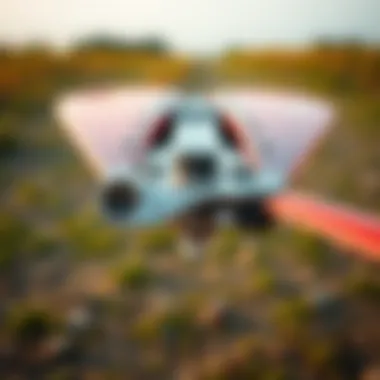
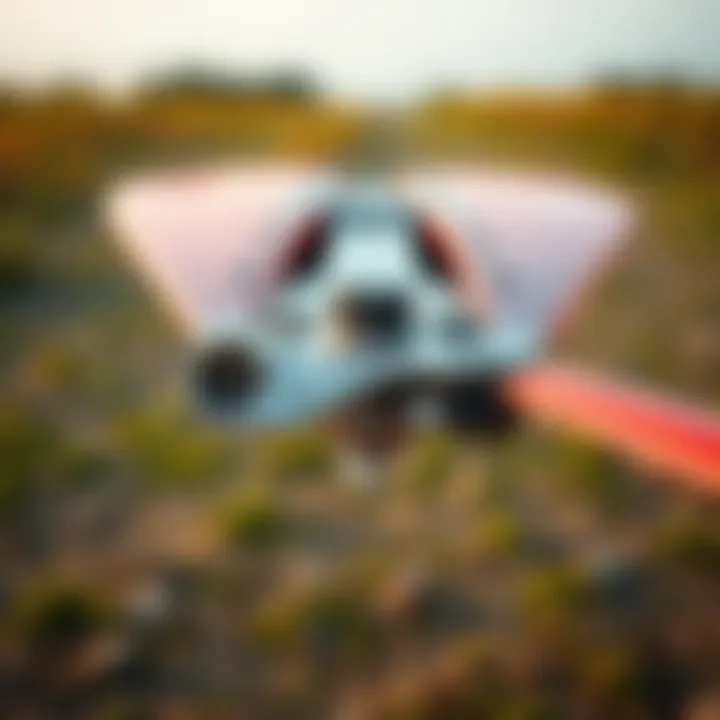
However, not every story is glowing. Some seasoned riders report that the adjustments required to optimize the setup can initially be perplexing. It might take some trial and error to find the right settings for individual preferences and conditions.
That said, overall satisfaction ratings tend to be high, suggesting that once people acclimate to the hover glide foils, they're likely to recommend them to friends or fellow enthusiasts. Feedback on forums consistently highlights how much these foils can positively impact the kiteboarding experience, making them a go-to choice for many folks in the sport.
In summary, the functional aspects of hover glide foils reveal a well-thought-out integration of design and operational mechanics, addressing the needs of riders from all backgrounds. These characteristics not only make them a pleasure to use but also enhance the overall kiteboarding adventure.
Applications in Kiteboarding
The incorporation of hover glide foils has transformed the kiteboarding landscape in recent years. They are not just a novel accessory; they represent a significant leap in the way riders interact with water, wind, and their equipment. As more kiteboarders seek to push boundaries, understanding the applications of hover glide foils becomes imperative. This section will dive into why these foils matter in kiteboarding and what specific dimensions they bring to the sport.
Competitive Use Cases
In competitive arenas, where every second counts, the hover glide foil stands out like a beacon of innovation. Professionals aiming for that exhilarating edge rely on the unique performance characteristics of these foils. They are designed to reduce drag while assuring stability, which is crucial during races where speed is king. Numerous kiteboarding championships now feature events that focus on the use of these advanced foils, showcasing the evolution of the sport.
- Speed: Athletes report notable improvements in speed. The aerodynamic design allows for quicker starts and sharper turns, crucial in competitive environments.
- Aerodynamics: With superior lift capabilities, these foils permit riders to perform jumps and tricks that were once considered borderline impossible, elevating the excitement and technical challenge.
- Adaptability: Whether it's light winds or choppy conditions, the hover glide foils adapt seamlessly, making them a go-to choice for competitors who need flexibility on race day.
Many competitive kiteboarders have turned to platforms like Facebook or Reddit to discuss their experiences and preferences, highlighting how hover glide foils contributed to their performance revamp.
Recreational Riding
Recreational kiteboarding also stands to gain immensely from the use of hover glide foils. For many, the appeal lies not in the competition but in the joy of gliding over water, feeling the wind in their hair. These foils allow recreational riders to enjoy a smoother and more user-friendly experience.
- Ease of Use: Many riders find that hover glide foils are more forgiving, enabling beginners to learn and progress at a comfortably quick pace.
- Experience Enhancement: The ability to glide effortlessly means riders spend less time struggling with drag and more time enjoying the ride. This can be particularly beneficial for long sessions, where stamina is key.
- Exploration Potential: With these foils, riders can venture into waters that are typically less forgiving, transforming flat spots into thrilling experiences. No longer is the thrill confined to pristine conditions.
The community has been instrumental in sharing these experiences, often turning to websites like Wikipedia for insights into new tech or trends in recreational riding.
"With hover glide foils, the water feels like a new world, opening up possibilities that we never even dreamt of before!"
This resonance of experiences—both competitive and recreational—tells a vivid story of how hover glide foils enrich the kiteboarding culture. By breaking down performance barriers and enhancing accessibility, they foster a love for the sport that caters right to the heart of kiteboarders.
As you consider engaging with hover glide foils, whether for competition or recreation, remember that they not only facilitate a better ride but also expand horizons, allowing you to experience kiteboarding in a refreshing light.
Choosing the Right Hover Glide Foil
Choosing the right hover glide foil is a pivotal step in unleashing your kiteboarding potential. The hover glide foil is not just a piece of equipment; it’s a multidimensional tool that can dramatically enhance your riding style and performance. So, whether you’re just starting out or are a seasoned pro looking to upgrade, this decision requires careful thought. A foil that aligns with your skills and riding preferences can make the difference between smooth rides and frustrating mishaps.
Understanding the nuances of selection can help you avoid a steep learning curve and enable you to enjoy the exhilarating experience that kiteboarding offers.
Factors to Consider
When selecting a hover glide foil, several factors come into play that can influence your riding experience:
- Riding Style: Are you into fast-paced racing or leisurely gliding along the coast? Different foils cater to different styles. Some are designed for speed while others lend themselves to stability.
- Weight and Size: Knowing your weight can help you identify which foil size will provide the best lift. Heavier riders might need a larger Wing Span for consistent lift, while lightweight riders can opt for smaller sizes that allow for agility.
- Experience Level: Beginner riders may prefer stable, easy-to-control foils, whereas advanced riders could look for designs that offer more maneuverability and speed for tricks.
- Water Conditions: The type of water conditions you'll be riding in can also affect your choice. Choppy waters might necessitate a different design compared to flat water conditions.
"Taking the time to evaluate these factors can save you from buyer's remorse and lead to a more enjoyable kiteboarding experience."
Size and Performance Match
Pairing the right size foil with your performance goals is crucial to truly harnessing the benefits hover glide foils provide. Each size is tailored to specific needs, and understanding these can offer more than just a boost in efficiency.
- Wing Size: Larger wings generally offer more lift and can be great for beginners or those who enjoy riding with less power from the kite. Smaller wings, though, allow for higher speeds and greater maneuverability, making them perfect for advanced riders aiming for speed and tricks.
- Aspect Ratio: A foil with a higher aspect ratio typically excels in speed but may be less stable. Lower aspect ratios provide stability, catering to those just starting or cruising for leisure.
- Foil Length: The length of the mast plays a significant role in how the foil interacts with the water. Longer masts can offer better performance in rough waters, reducing the chances of hitting waves, while shorter masts provide easier handling, especially when learning.
Understanding these criteria will help you narrow down your options, ensuring that you select a hover glide foil that is not just suitable but enhances your entire experience in kiteboarding.
Maintenance and Care
Taking care of your hover glide foil is as essential as the experience of riding it. Extensive use of this sophisticated equipment in various conditions makes routine maintenance a crucial part of kiteboarding. Proper care not only prolongs the life of the foil but also ensures optimal performance and safety on the water. Ignoring maintenance could lead to less efficient rides and even potential mishaps out on the waves. This section will delve into effective maintenance practices, as well as common issues you might encounter and how to solve them.
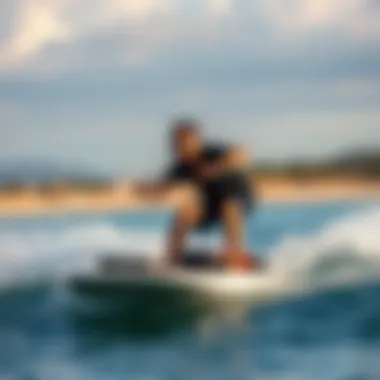
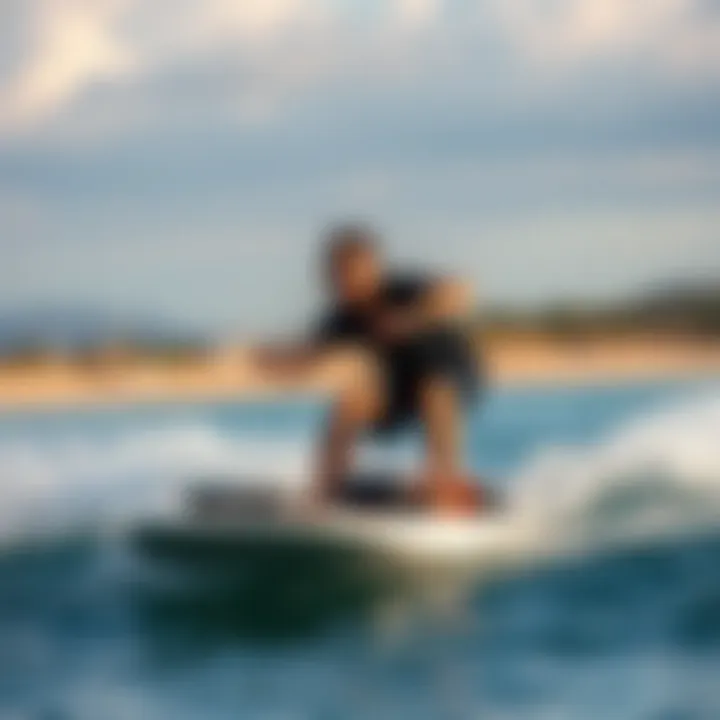
Routine Maintenance Practices
Keeping your hover glide foil in top-notch condition requires some routine checks. Here's a straightforward way to keep everything working like a charm:
- Wash After Use: After every use, especially in saltwater, wash the foil thoroughly with fresh water. Salt and debris can corrode materials over time.
- Inspect for Damage: Regularly check the wings for scratches or dents. Even minor dings can affect performance, so addressing them early is crucial.
- Check Connections: Ensure that all connections are tight and free from rust. This minor inspection can prevent larger problems later on.
- Dry Thoroughly: After washing, allow the foil to dry completely before storing it. Moisture trapped in crevices can lead to mold and deterioration.
- Foil Cover Use: When not in use, store the foil in a protective cover. This keeps it safe from UV rays and physical damage.
It's also worth noting that investing in specialized cleaning products will enhance overall upkeep. Some products, designed specifically for marine gear, can provide an added layer of protection.
Common Issues and Solutions
Even the best hover glide foils can encounter problems. Being prepared to tackle these issues can keep your adventures smoothly sailing:
- Problem: Wear and Tear on Wings
Solution: Sand down small scratches and apply a marine-grade sealant to protect from further damage. - Problem: Rusty Connectors
Solution: Use a rust remover specifically designated for marine usage, and apply a light coat of anti-seize lubricant to prevent future rusting. - Problem: Dents from Impact
Solution: Small dents can often be smoothed out with a heat source. Just be careful! Use heat sparingly to avoid damaging the material. - Problem: Poor Performance in the Water
Solution: Examine the foil's alignment and make sure it’s balanced. Adjusting the position or angle might improve ride quality.
"Proper maintenance can mean the difference between a smooth sailing session and a frustrating experience."
Taking the time to care for your hover glide foil is well worth it in the long run. It complements your investment and ensures many thrilling rides to come. Regular upkeep keeps both your equipment and your kiteboarding journey enjoyable and trouble-free.
Innovations and Future Directions
The world of kiteboarding is ever-evolving, and innovations within the realm of hover glide foils are no exception. Staying abreast of these advancements is crucial for enthusiasts and professionals alike, as they can significantly enhance performance and user experience. In this section, we will discuss the emerging technologies shaping the future of hover glide foils and explore potential market trends that may influence how riders approach the sport.
Emerging Technologies
As technology marches on, so too does its application in kiteboarding. Emerging technologies in the hover glide foil space primarily hinge on enhancements in material science, design frameworks, and digital integration. Improving the speed and maneuverability of foils while ensuring user safety is paramount.
- Advanced Materials: Innovations like carbon fiber composites and high-density foams are making foils lighter yet much stronger. This means a more efficient lift-to-drag ratio in the water, allowing for better performance. You’ll often hear riders say, “It seems like I’m flying through water,” and that’s no exaggeration when you’re riding with the latest materials.
- Smart Technology Integration: Imagine a foil that can adjust its parameters in real-time based on water conditions or rider input. Some companies are already experimenting with sensors that feed data to a mobile device. This data can provide insights on speed, stability, and performance metrics, allowing users to tailor their riding experience.
- 3D Printing: This technique enables the customization of foils with intricate designs that were previously too complex to produce using traditional methods. Riders can request personalized adjustments, ensuring that their gear matches their unique riding style and preferences.
These advancements not only improve performance but also pave the way for more approachable gear suitable for novice riders.
"In kiteboarding, embracing innovation isn't just a trend; it's a pathway to redefining the very essence of the ride."
Potential Market Trends
As consumer preferences shift, the market for hover glide foils is poised for transformation. Anticipating potential market trends is vital for manufacturers, retailers, and riders alike.
- Increased Customization: Nowadays, kiteboarders aren’t just looking to buy off-the-rack gear. They want bespoke solutions tailored to their exact desires. In response, brands are increasingly offering customizable options, allowing users to select dimensions, colors, and features that suit their personal style.
- Sustainable Practices: Eco-consciousness is gaining traction within the adventure sports community. Brands that utilize sustainable materials and ethical manufacturing processes will likely find favor among a growing segment of the market. Consumers are more likely to support companies that prioritize the environment, turning sustainability into a significant purchasing factor.
- Growth in Electric Foiling: The rise of electric surfboards has sparked interest in electric foiling as well. Riders can enjoy foiling without relying solely on wind or waves. This trend could alter the dynamic of the sport, attracting a different kind of user looking for a no-wind-needed experience.
As we navigate into a future filled with possibilities, staying informed about these innovations and trends is essential. For kiteboarders, this knowledge not only enhances performance but also aligns practices with evolving market values, ensuring they ride the wave of change.
To explore more about the future of hover glide foils, check resources at Wikipedia, Britannica and relevant forums such as Reddit.
Finale
The culmination of understanding the hover glide foil is crucial for both novice and experienced kiteboarders. As we wrap up this exploration, it is clear that the hover glide foil is not just a trendy addition to the kiteboarding gear; it represents a significant leap in aquatic sports technology. In discussing its design, functionality, and the unique riding experience it offers, we’ve illustrated the benefits of incorporating this innovative equipment into one’s kit.
Recap of Key Points
- Engineering Brilliance: The hover glide foil is crafted with precision to strike a balance between strength and lightness, allowing for improved performance during kiteboarding.
- Hydrodynamic Advancements: It leverages advanced hydrodynamics, enabling riders to experience smooth gliding and stable maneuvers atop the water surface, even in choppy conditions.
- User-Centric Design: Feedback from the kiteboarding community highlights the comfort and efficiency this foil provides, distinguishing it from traditional setups.
- Versatility in Applications: Whether you are competing at high levels or simply enjoying a weekend on the water with friends, the hover glide foil proves adaptable to various riding styles and conditions.
- Maintenance Importance: Regular care measures not only extend the life of the foil but also enhance its performance. Knowing how to tackle common issues can save a rider from unexpected setbacks on the water.
In understanding these elements, kiteboarders can make informed decisions about their equipment, improve their performance, and ultimately enhance their experience on the water.
Final Thoughts on the Hover Glide Foil
The hover glide foil represents not just a tool for kiteboarding but a gateway to unlocking new levels of performance and enjoyment on the water. Its exceptional design, combined with the shared experiences of users, paints a picture of an evolving sport that embraces innovation. For those looking to elevate their kiteboarding adventures, considering a hover glide foil could be a game changer. With an eye on emerging technologies and market trends in foiling, it’s evident that the future holds exciting potential for this segment of the sport.
The journey into the world of foiling does not end here; it evolves. As each kiteboarder explores their unique style, integrating the hover glide foil can transform not only their ride but also their overall relationship with the water. Dive deeper into this sport, share experiences, and continue learning because the ocean is vast, and there is always more to discover.
For further reading, you can explore:
- Wikipedia’s Overview of Kiteboarding
- Britannica Review on Foils and Their Uses
- Engaging discussions on Reddit about Kiteboarding Equipment
- Updates and images shared on Facebook Kiteboarding Communities
The adventure awaits. Embrace the glide!















